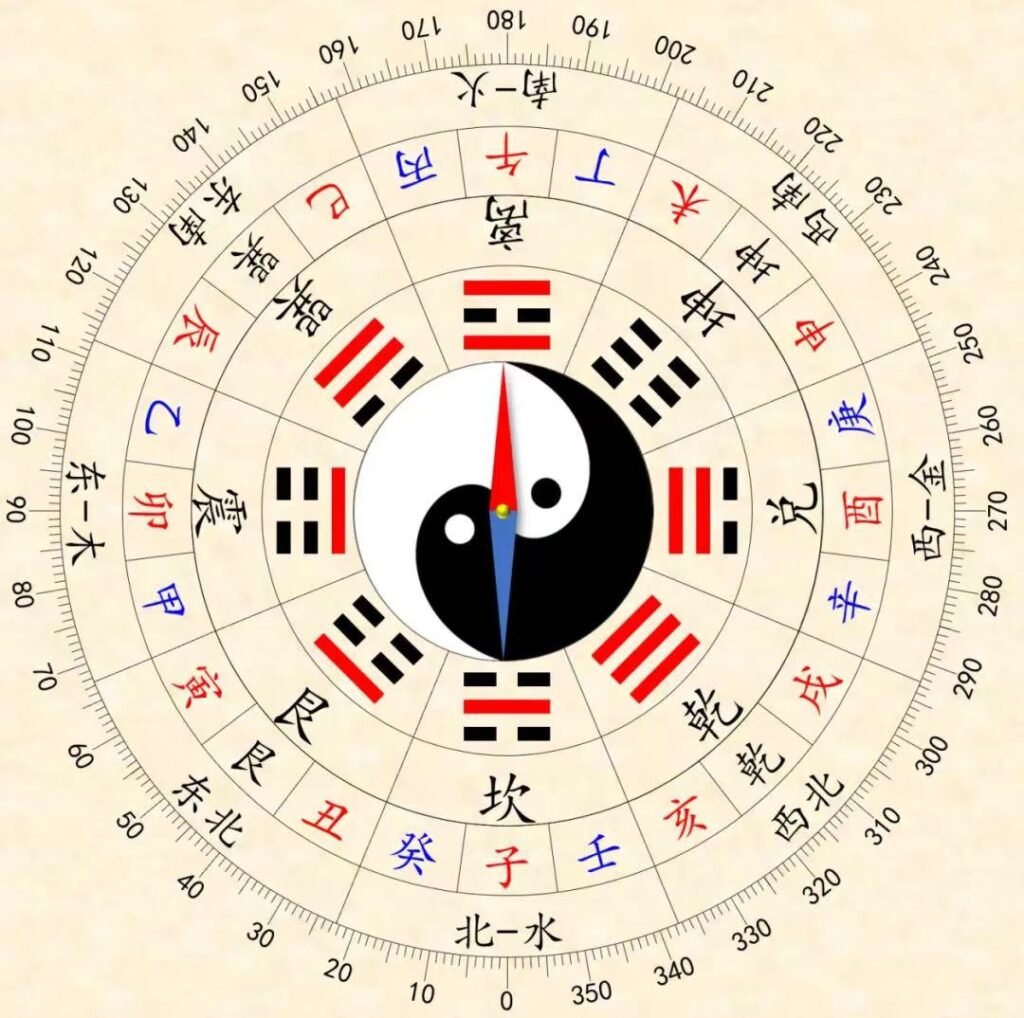In traditional Chinese Feng Shui, there’s a foundational concept known as the “Twenty-Four Mountains” (Er Shi Si Shan, 二十四山). While it may sound complex, the idea is actually quite straightforward. Imagine dividing the full 360-degree circle of a compass into 24 equal segments. Each segment spans 15 degrees and is referred to as a “Mountain” or “Mountain Head” (Shan Tou 山头). Altogether, these 24 directional divisions form the basis for determining the facing and sitting positions of a structure or space.
To use these directions effectively, each of the 24 segments is assigned a specific code, drawn from traditional Chinese cosmology—namely the Ten Heavenly Stems (天干), the Twelve Earthly Branches (地支), and Four Trigrams (卦) from the Bagua. Here’s the breakdown:
- Ten Heavenly Stems: Jia (甲), Yi (乙), Bing (丙), Ding (丁), Wu (戊), Ji (己), Geng (庚), Xin (辛), Ren (壬), Gui (癸)
- Twelve Earthly Branches: Zi (子), Chou (丑), Yin (寅), Mao (卯), Chen (辰), Si (巳), Wu (午), Wei (未), Shen (申), You (酉), Xu (戌), Hai (亥)
- Four Trigrams: Qian (乾), Kun (坤), Gen (艮), Xun (巽)
These directional codes are then fixed onto a Feng Shui compass (luopan 罗盘) at precise degrees. Once a direction is measured, the associated code is used to interpret the Qi energy of that orientation, based on the principles of the Hetu and Luoshu diagrams (河图洛书)—ancient cosmological charts that represent the flow and interaction of natural energies.
By analyzing these codes, a Feng Shui practitioner can diagnose the energetic qualities of a space and apply strategic adjustments for better harmony, health, and prosperity.

